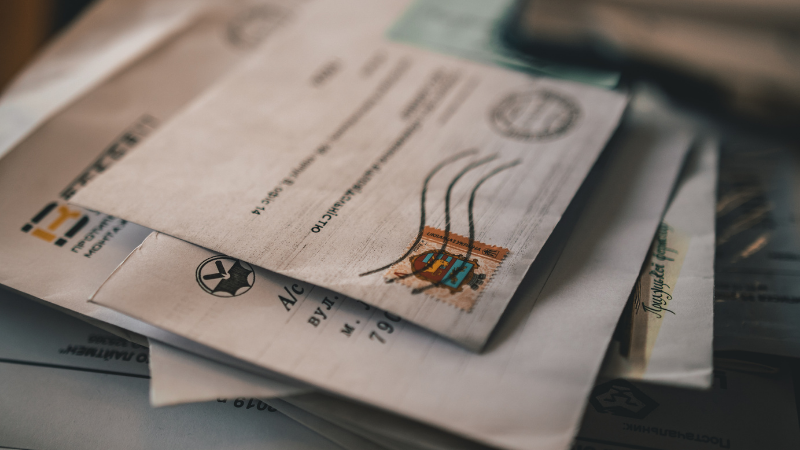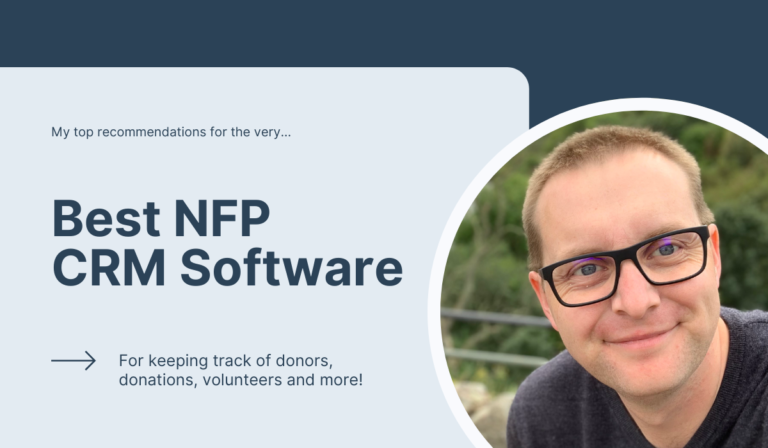How to ask for donations: A comprehensive guide for nonprofits

Asking for donations can be a daunting task for nonprofits. It’s essential to know how to ask for gifts respectfully and politely while also being assertive. In this blog post, we will walk you through the steps of asking for donations so that you can make the most out of your fundraising efforts!
#1 Build your case for support for your nonprofit organization

Before asking for donations, you need to build your case for support. This means that you need to make the argument as to why donors should give their money to your organization. What impact will their donation have? Why are you the best organization to receive their support? Before you try to raise money, you need to have this foundation in place.
Set a clear goal
How much money do you need to raise? First, it’s essential to communicate a clear, believable and achievable target to your donors. This will show that you have a plan in place and are serious about reaching your goal. When setting your target amount, try to avoid using round numbers. The more specific you can be with your ask, the more credible and believable. For example, don’t ask for $1,000 if you really need $1,200 or $950.
Be specific in your ask
When you ask, be specific about what the donation will be used for. For example, don’t just say that the money will be used for “general operating expenses.” Instead, be clear about what programs or initiatives the donation will help fund.
Focus on outcomes
As hard as it can be to hear, your donors actually don’t care about you or your organization. Instead, they care about what you do. So when asking for donations, focus on the outcomes of your work instead of what you do. This will show donors that their money will make a tangible difference in the world.
Set a deadline
If you’re asking for donations to support a specific project, set a deadline for when the funds need to be raised. This will create a sense of urgency and encourage donors to give sooner rather than later.
Write a list of recent wins
What have your donors recently achieved through their generosity? Communicating recent wins to your donors will help build credibility and trust. They’ll know they can donate confidently to your cause because you’ve demonstrated your credibility.
#2 How to ask for donations with direct mail

Now that you’ve built your case for support, it’s time to write your direct mail letter for your fundraising campaign! This is the piece of correspondence where you ask potential donors for money. Again, it’s important to personalize each letter and make sure it feels like a one-on-one conversation.
Use donor-centric language
When writing your appeal letter, use donor-centric language. This means that you should focus on the donor and their interests rather than your organization. For example, “Your donation will help us provide food for homeless people in our community” is more donor-centric than “Our organization needs donations to continue our work.”
Fundraising has its own style of writing. You need to use “you” and “your” a lot. For example, “When you make a donation to our organization, you are helping us make a difference in the lives of those we serve.”
If you find yourself using the words “I” and “we” in your appeal letter, consider if they can be replaced or removed. The more you’re talking about yourself, the less you talk about your donor.
Assume your letter won’t be read
Not everyone who receives your appeal letter will actually read it. In fact, many people will simply toss it in the trash. That’s why it’s essential to start your letter with a strong headline or opening statement that will capture their attention.
When writing your letter, you need to make sure that it’s easy to skim read. That means you should use a lot of formatting. Use these formatting devices to make your appeal letter easier to scan:
- bulleted lists (like this one)
- bold text
- italicized text
- indentation
- headlines
- postscript
- short paragraphs (2-3 sentences max)
- white space
You can also use images to break up the text and make your letter more visually appealing. Just make sure that any images you use are high quality and relevant to your appeal.
When writing your letter, keep in mind that people are busy. They don’t have much time to read along, meandering letters. So be clear and concise in your writing. Get to the point quickly, and don’t waste your donor’s time.
Use conversational language
Your appeal letter should feel like a one-on-one conversation. Avoid using jargon or acronyms that your donor might not understand. And most importantly, don’t talk down to your donor. Instead, write like you would speak to them in person.
If you have a personal connection to the cause you’re raising money for, mention it in your letter. This will help donors connect with you on a personal level. It also shows that you’re passionate about the cause and that you’re not just asking for money because you have to.
Put the ask upfront.
You must get to the point with your appeal letter. In the first two sentences, make it clear to the reader why you are writing to them. You don’t need to go into all the details, but you should let them know you have a request to make.
For example, you could start your letter with something like this:
“I’m writing to ask for your help. We are trying to raise $X to fund our new project.”
or
“Your support is vital to our success. Therefore, I’m asking you to consider making a donation of $X to our organization.”
Use emotion
When writing your appeal letter, it’s crucial to use emotion. Use powerful words that will evoke a reaction from the reader. For example, words like “urgent,” “critical,” and “desperate” can help get your point across.
You should also tell stories about the people who will benefit from the donor’s generosity. These stories should be emotionally resonant and make the donor feel like they are making a difference.
Repeat the ask
It’s important to repeat the ask throughout your letter. You want to make it as easy as possible for the donor to give, so you need to remind them how they can do that.
You can do this by including a call-to-action (CTA) at the end of your letter. A CTA is a specific instruction that tells the reader what you want them to do. For example, your CTA could be something like “Click here to make a donation” or “Send your donation to X address.”
Avoid big chunks of text.
When you’re writing your donation appeals, avoid big chunks of text. No one wants to read a huge block of text. Instead, break up your letter into smaller paragraphs. This will make it easier for the reader to digest your letter and find the information they are looking for.
Longer is often better.
Even though you want to avoid big chunks of text, you should also try to make your letter as long as possible. The longer your letter is, the more likely it is that the reader will find something they connect with. And the more likely it is that they will make a donation.
#3 How to ask for donations with online fundraising tools

Online fundraising tools make it easy for donors to give money to your nonprofit. There are a number of different platforms you can use, each with its own set of features.
Use an attention-grabbing headline on your donation page.
When someone visits your donation page, the first thing they will see is the headline. This is the part of your page that will get their attention and make them want to learn more. You should use a headline that is catchy and relevant to your cause. You need to earn your donor’s attention. So make sure your headline grab’s their attention and speaks to the outcomes they can achieve through their gift. The worst thing you could do is simply have a headline that says “Donate.”
Use mobile-responsive donation pages
People are using their mobile devices more and more to access the internet. This means you need to make sure your online donation page is mobile responsive. Mobile responsive design ensures that your page will look good on all devices, from phones to tablets to laptops. Don’t lose donors because they can’t view your page properly on their phones.
Use a default suggested donation amount.
One of the most important things you can do on your donation page is make sure you’re using fundraising software that allows you to have pre-filled, suggested donation amounts. Making sure these amounts aren’t set too low is an important fundraising strategy that will help to increase your average donation amount, allowing you to raise more funds online.
Include images and videos
Images and videos are a great way to engage donors on your donation page. People are more likely to donate if they can see where their money is going. So include pictures and videos of the people or projects you are raising money for. This will help potential donors connect with your cause and see the impact their donation can make.
Simplify your online donation form
Make the giving process easy. The easier you make it for donors to give, the more likely they are to actually do it. If you’re looking for more donations, then you need to simplify your giving process. You should include clear instructions on your donation page and make the donation process as simple as possible. The last thing you want is for potential donors to get frustrated and give
Use email to drive online donations
Email is a great way to drive traffic to your online donation page. You can use email to reach a larger audience and tell them about your cause. You can also use email to thank people for their donations and update them on how their money is being used. Email is an important part of any online fundraising campaign.
#4 How to ask for donations from major donors

Major donors are an important part of any nonprofit. They can provide a large amount of financial support and help your organization reach its goals.
But asking for donations from major donors can be tricky. You need to make sure you approach them in the right way and offer something that they find appealing. Here are a few tips on how to ask for donations from major donors.
Make a personal connection
The best way to get a major donor to donate is by making a personal connection with them. You need to show them that you are interested in their opinion and that you value their input. Don’t just email them out of the blue and ask for money.
Approach them with a goal in mind
When you are approaching major donors with your donation requests, you need to have a specific goal in mind. Tell them exactly what you are raising money for and how their donation will be used. Be clear about your ask and what you need the money for.
Prepare a major gifts prospectus
A major gifts prospectus is a document that outlines your organization’s goals and how the donor can help you achieve them. It is a great way to show prospective donors exactly what you are trying to accomplish and how they can be a part of it. Make sure your prospectus is well-written and easy to understand.
Demonstrate a strong return on investment
Major donors want to know that their money is going to be used effectively. You need to demonstrate a strong return on investment and show them how their donation will make a difference. Don’t just talk about what you are doing, but also talk about what the donor can achieve through their gift.
#5 How to ask for donations at fundraising events

Fundraising events are a great way to raise money for your nonprofit. They allow you to connect with donors face-to-face and show them what your organization is all about. But asking for donations at nonprofit fundraising events can be tricky. Here are a few tips on how to do it effectively.
Make sure you know your goals
Before you even start planning your next fundraising event, you need to make sure you know your goals. What do you want to achieve from the event? Once you have a goal in mind, it will be easier to create a plan and target donors.
Plan your event carefully
The more thought you put into planning your event, the more successful it will be. Make sure you have a solid plan and that all of your details are in order. You don’t want to be scrambling at the last minute trying to figure out what to do.
Create an event agenda
An event agenda is a great way to keep your fundraiser on track. It will help you stay organized and make sure that all of your important events happen on schedule. It also gives your guests a clear idea of what to expect from the event.
Make a donation request early in the event
Don’t wait until the end of the event to ask for donations. Make your request early on, preferably during the opening remarks. This will give you the best chance of getting donations from your guests.
Thank your donors
Be sure to thank your donors for their contributions. You can do this verbally at the event or through a follow-up email or letter. Whatever method you choose, make sure you are sincere and grateful.
#6 How to ask for donations with crowdfunding campaigns

Crowdfunding campaigns and peer to peer fundraising are a great way to raise money for nonprofit organizations. They allow you to connect with donors from all over the world and show them what your organization is all about. But asking for donations with crowdfunding campaigns can be tricky. Here are a few tips on how to do it effectively.
Set a fundraising goal
Before you launch your crowdfunding campaign, you need to set a fundraising goal. This will give you something to work towards, and it will help donors see how their money can make a difference. Be realistic with your goal and make sure you can achieve it.
Create a video
A video is a great way to introduce your nonprofit to your prospective donors. It allows you to tell your story and shows donors what your organization is all about. Keep your video short and to the point. You want to make sure that donors will watch it all the way through.
Tell your story
Your crowdfunding campaign is an opportunity to tell your story. Don’t just talk about what you are doing, but also talk about why you are doing it and what the donor can achieve through their gift. This is a great way to connect with donors on an emotional level.
Make a donation request early in the campaign.
Don’t wait until the end of your crowdfunding campaign to ask for donations. Make your request early on, preferably in the first few days of the campaign. This will give you the best chance of getting donations from your donors.
Conclusion
Asking for donations can be a daunting task, but it doesn’t have to be. By following the tips in this guide, you can write an effective fundraising appeal letter that will help you raise the money you need. Just remember to be clear, concise, and passionate in your writing, and you’ll be sure to get the donations you’re looking for.





